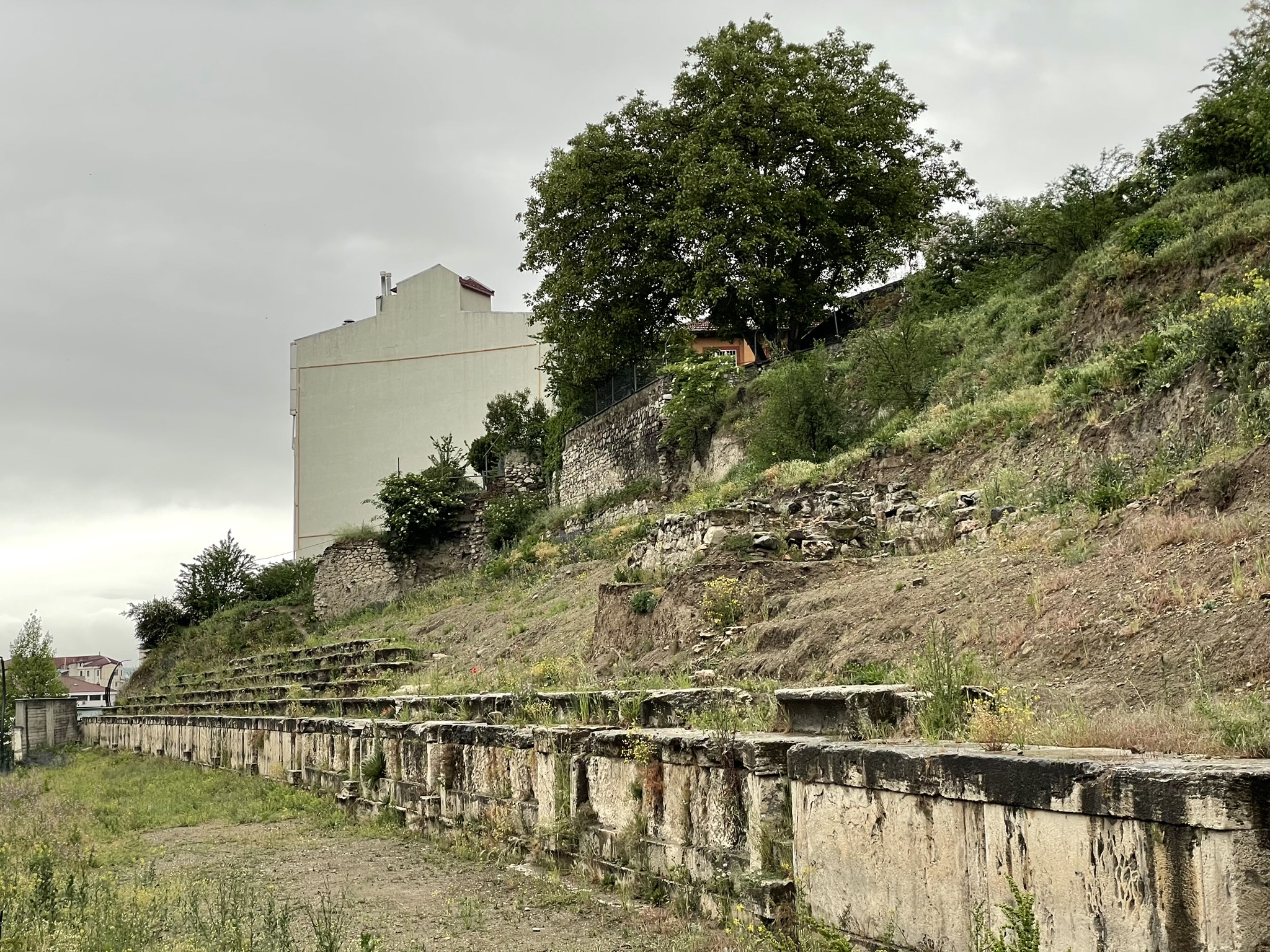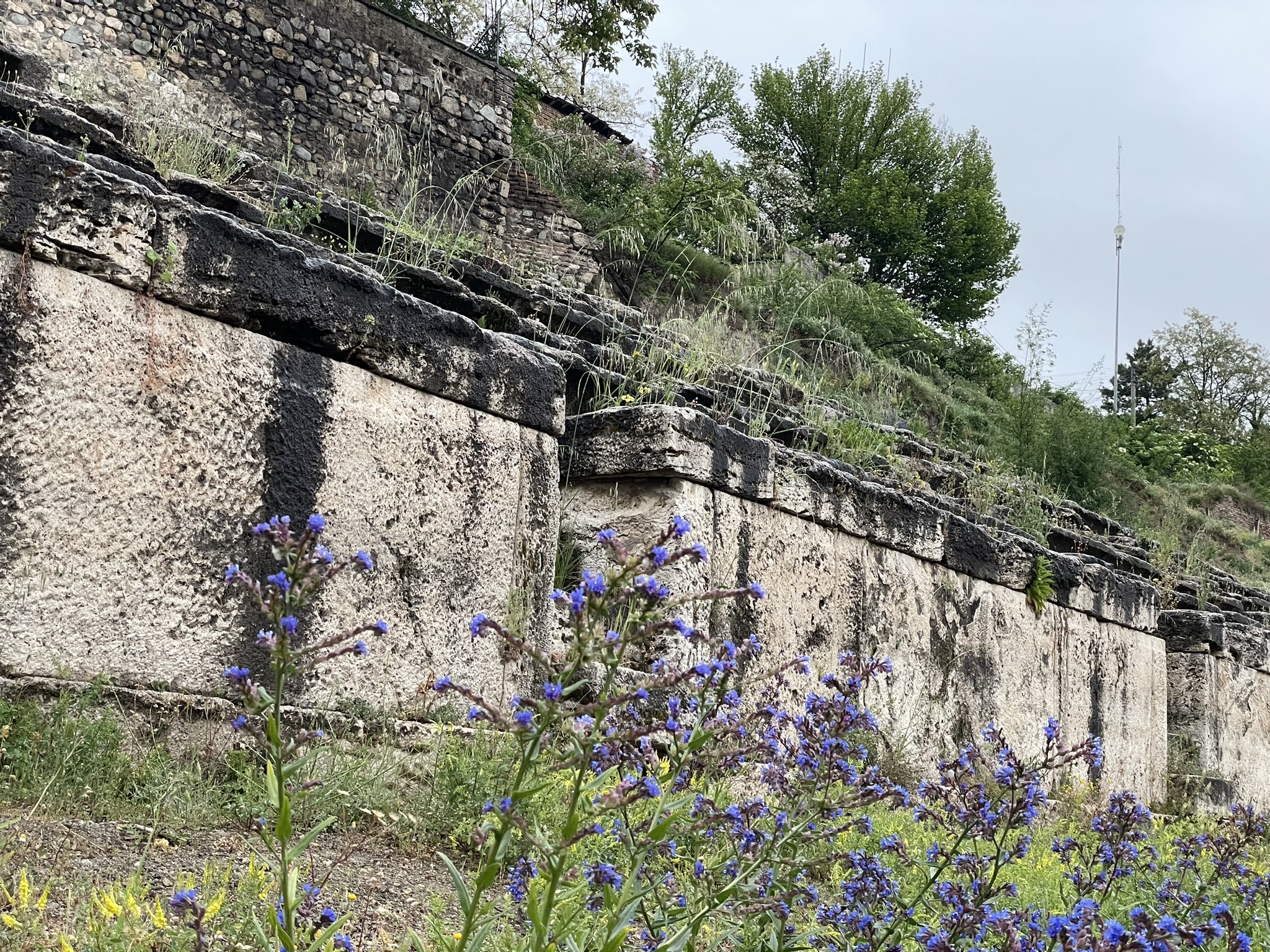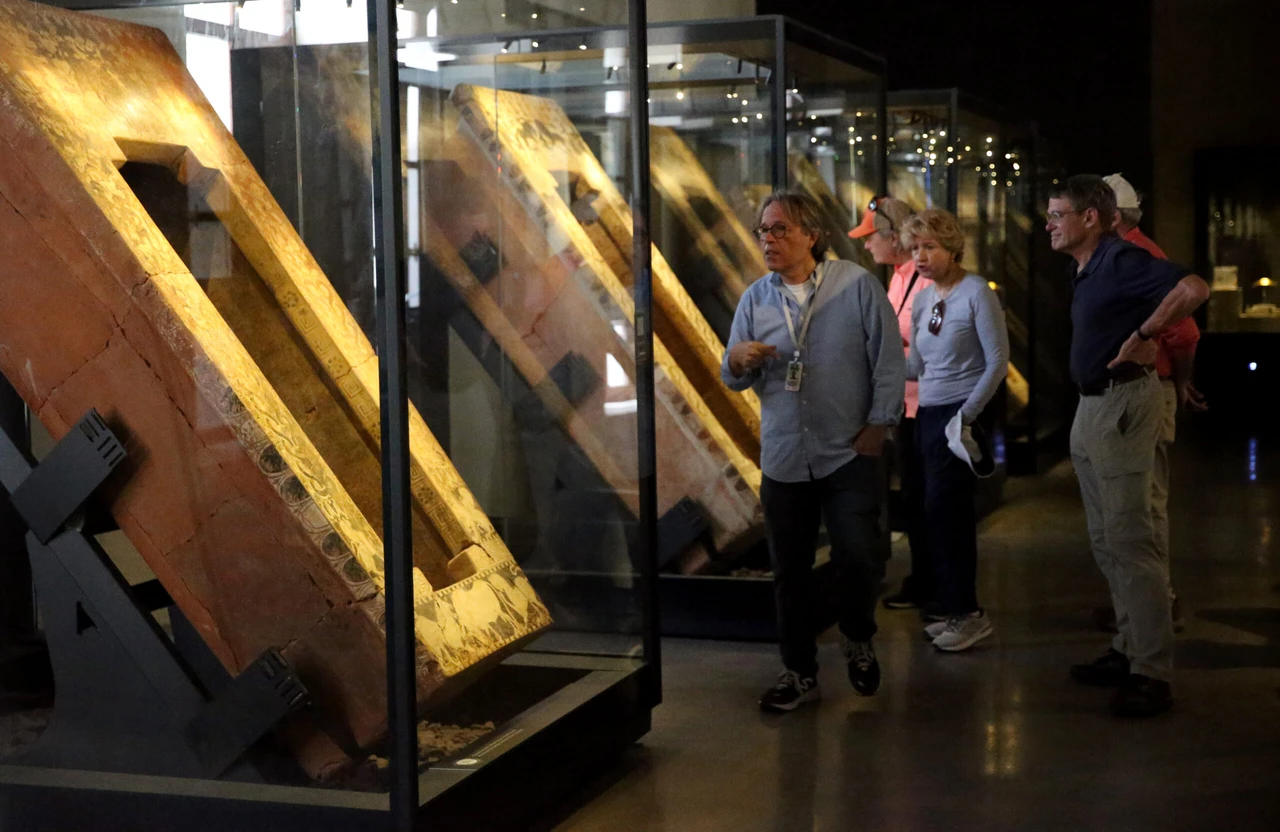Unearthing Claudiopolis: Bolu’s ancient stadium reveals Roman era secrets
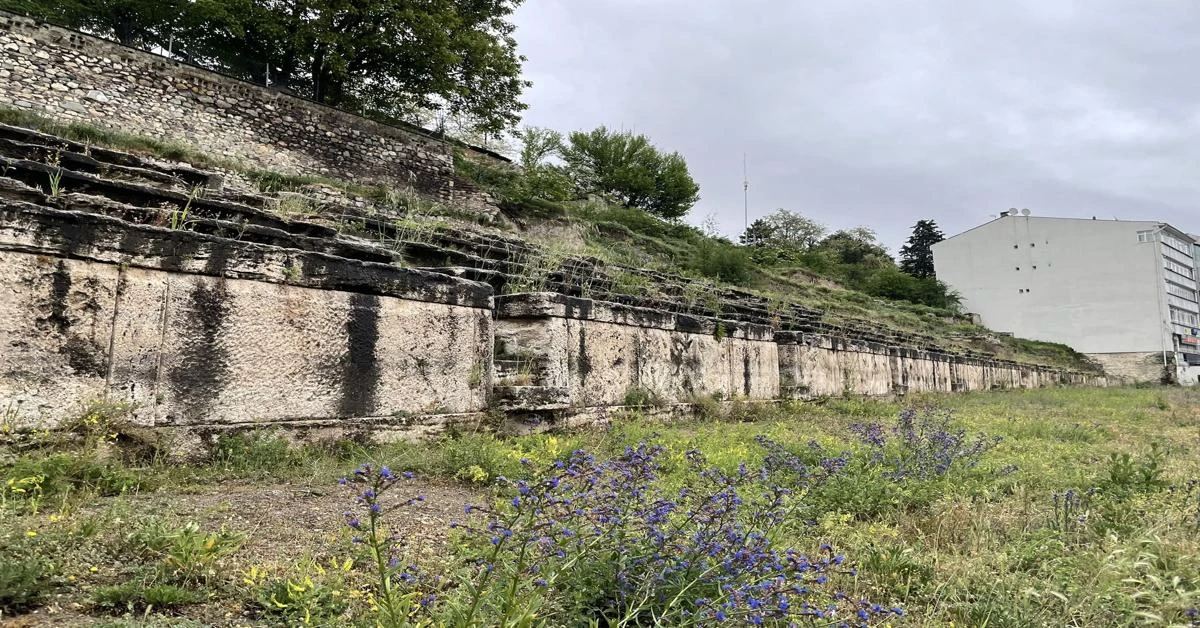
Stadiums, which have been an integral part of the urban fabric and city identity since antiquity, are monumental structures where sporting events are held which allowed spectators to watch these events. The Claudiopolis Stadium in the city center of Bolu, Türkiye, identified by the Bolu Museum Directorate in 2008, is of great importance for Anatolian archaeology in light of its ancient inscriptions.
Remains of Claudiopolis Stadion structure, Photo by Koray Erdogan, 2024
Claudiopolis, whose existence was first documented by excavations in 1978, has yielded many architectural artifacts dating to the 2nd and 3rd centuries A.D. In a general summary, the ancient buildings unearthed so far include mosaic floor pavements belonging to various buildings, necropolis areas that were found to spread over a very large area, a 15-meter Roman road, baths, churches, temples and the remains of different buildings with unidentified functions, and the remains of the stadium unearthed by excavations in 2008.
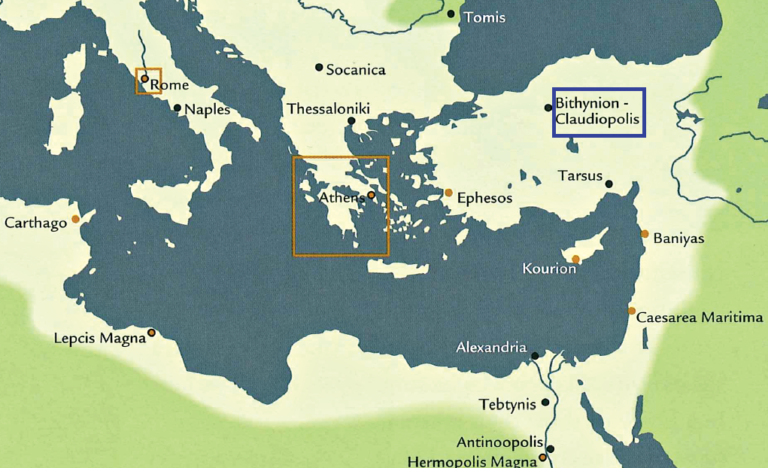
Map showing Roman festival sites and Claudiopolis, British Museum Press, 2008
Among the city buildings is the Temple of Hadrian in Hisartepe and the remains of the stadium are on it’s southern slope; the remains of the theater are on the southern slopes of Firkatepe and the statues in Kargatepe. It is clear from the architectural remains that the settlement area of Claudiopolis was located on these three hills. The ancient city is located below the modern city center, which is spread over the area dominating the Bolu Plain and includes Hisartepe, Kargatepe, Firkatepe and Ugurlunaip Hills.
Remains of Claudiopolis Stadium, Photo by Koray Erdogan, 2024
The necropolis areas of Tepecik, Cikinlar quarter, Tabaklar and Karakoy on the periphery of the city and the remains of the baths and pools in Alpagut quarter cover such a large area giving the idea of the importance and size of the ancient city of Claudiopolis.
Emperor Hadrian, one of the “five good emperors” of the Roman Empire, paid great attention to Claudiopolis and visited Claudiopolis during his trips to the Anatolian provinces. The people of Claudiopolis must have shown the same respect by having the stadium built in the name of the emperor.
Remains of Claudiopolis Stadium, Photo by Koray Erdogan, 2024
In 2008, during rescue excavations carried out in the stadium under the direction of the Bolu Museum, 5 seating rows were unearthed and it was understood that the structure extending in the east-west direction was the remains of a stadium. The most important evidence that the structure, which has 14 steps in the most preserved section, is a stadium, is the inscribed plate in the Balustrat section, which is located between the spectator section of the stadium and the running track and coincides exactly in the middle of the structure. Consisting of 4 plates, the inscription is the construction inscription of the stadium.
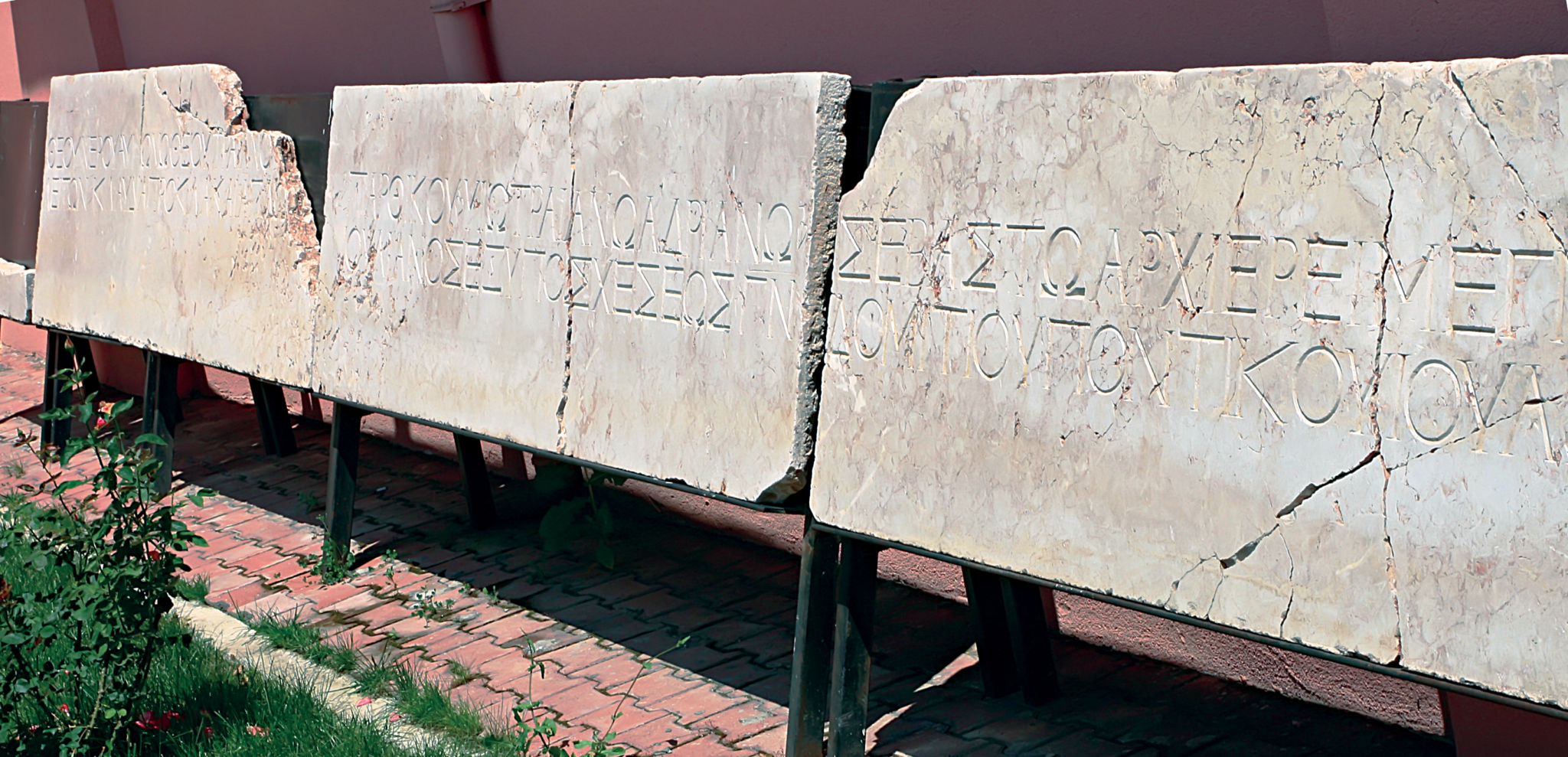
Construction inscription of the stadium, Bolu Museum
This inscription reads exactly as follows:
“This stadium was built by Domitius Ponticus Lulianus and his daughters Claudia Prokla and Ailius Plotius Lulianus on the word of … and …; grandson of the god Nerva, son of the god Traianus Parthicus, greatest priest, ruler for … years, … built and dedicated with their own money to the Emperor Caesar Traianus Hadrianus, once consul and father of the fatherland, and to his household and to the sacred senate and to the people of Rome and to the advisory council and the people of Claudiopolis”
It is understood from the inscription that Domitius Ponticus Lulianus and his daughters Claudia Prokla and Ailius Plotius Lulianus dedicated the stadium to Emperor Hadrian and the city of Claudiopolis.
In addition, one of the two gladiator inscriptions on display at the Bolu Museum is a very unique example of a gladiator monument. Made of hard limestone, the shield-shaped grave monument is shaped like a gladiator’s helmet with a perforated eye on the upper part. Next to the helmet is an incised dolphin fish. The lower part of the monument continues as a gladiator shield. In this area where the inscription is located, the figure of a dolphin fish can be seen again. There are herme on both sides of the monument. The 2nd century inscription on the monument reads, “The priest Secundus erected it for gladiators who fought one on one.” It is likely that Secundus was the financier of the gladiatorial games and erected such a monument for the dead gladiators.

Inscription erected by the Priest Secundus in honor of the gladiators, Bolu Museum
As can be seen from the inscriptions commissioned by the Priests Secundus and Anatole, gladiator games were organized in the stadium of Claudiopolis. Thus, it is clear beyond any doubt that gladiator games in the stadium of Claudiopolis were organized according to the categories mentioned in the inscriptions.
Starting from the Hellenistic Period, the region which was the city center of the Roman, Byzantine and Ottoman periods, has been under the pressure of new construction in every period. For this reason, the upper cultural layers have almost completely disappeared except for a few monumental structures of the Ottoman period (mostly mosques), while the cultural heritage below the ground is undergoing a process of irreversible destruction, as seen in many cities in Anatolia, especially since the 1970s.
The history of the region shows the influence of many tribes, states, kingdoms and empires. However, none of the architectural traces of the Ancient Age in Bolu has survived to the present day, except for the stadium. Especially in the city center, it is seen that the possibility of finding architectural remains belonging to different layers under the soil is very high.
